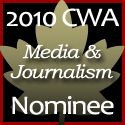 Stephen Harper is denying that his campaign has fallen flat , which is a good thing, because it means that he will continue his course of fear mongering, which is starting to turn people off.
Stephen Harper is denying that his campaign has fallen flat , which is a good thing, because it means that he will continue his course of fear mongering, which is starting to turn people off.And he will continue campaigning in a bubble where photo-ops replace open and frank discussion:
Harper’s strategy of refusing to take more than five questions a day from reporters amounts to a gross disservice to the public. Four of the permitted questions (generally two in French and two in English) go to reporters following Harper’s campaign, while the fifth is allotted to a local scribe, wherever the Conservative news conference that day happens to be staged. It’s a fragmented format that renders it almost impossible for reporters’ questions to build momentum and bear down on an issue.Maybe that's why he couldn't fill a small stadium for a rally, where he again focused on his paranoid vision of a "dangerous coalition".
Harpers rivals, in contrast, are far more open with the media — willing to subject themselves, and their policies, to some barbed questions in an effort to get their message out to voters. That’s as it should be. Few Canadians are able to follow the ins and outs of an election first-hand. Reporters serve as the public’s eyes and ears on the campaign trail. Ultimately, voters are the ones denied access and explanations through Harper’s five question format.
The Liberal platform announced online was an instant hit, prompting Bob Fife to tweet that Michael Ignatieff did not use a teleprompter, while Harper can't leave home without one (my paraphrase).
The differences between the style of these two leaders is astronomical.
Harper focuses on the inanimate 'economy' while Ignatieff focuses on 'people'. Harper's promises are for some distant time, while the Liberals plan to tackle important issues NOW.
It makes my choice pretty clear.



No comments:
Post a Comment